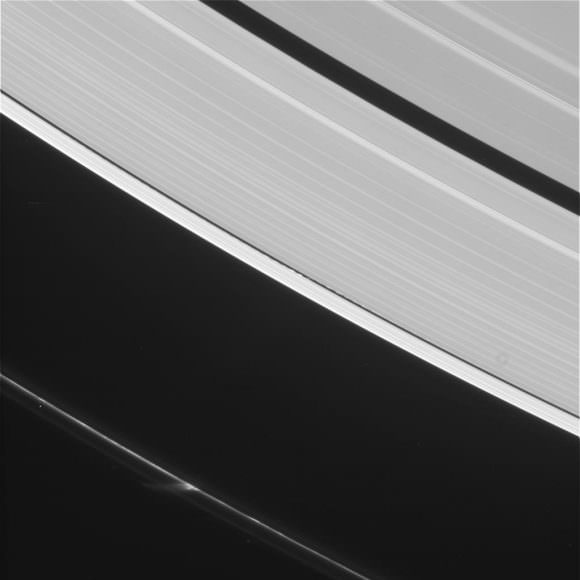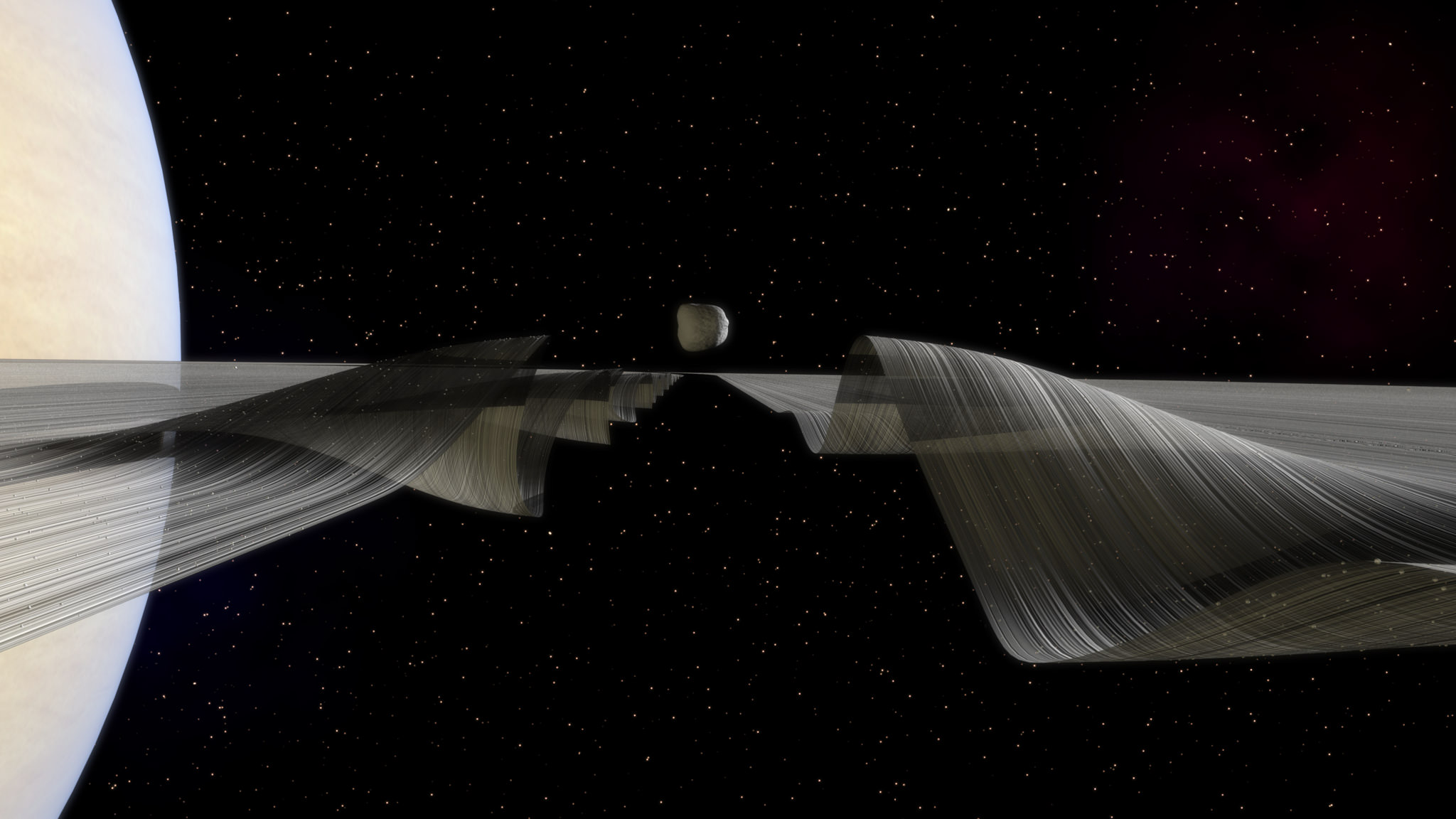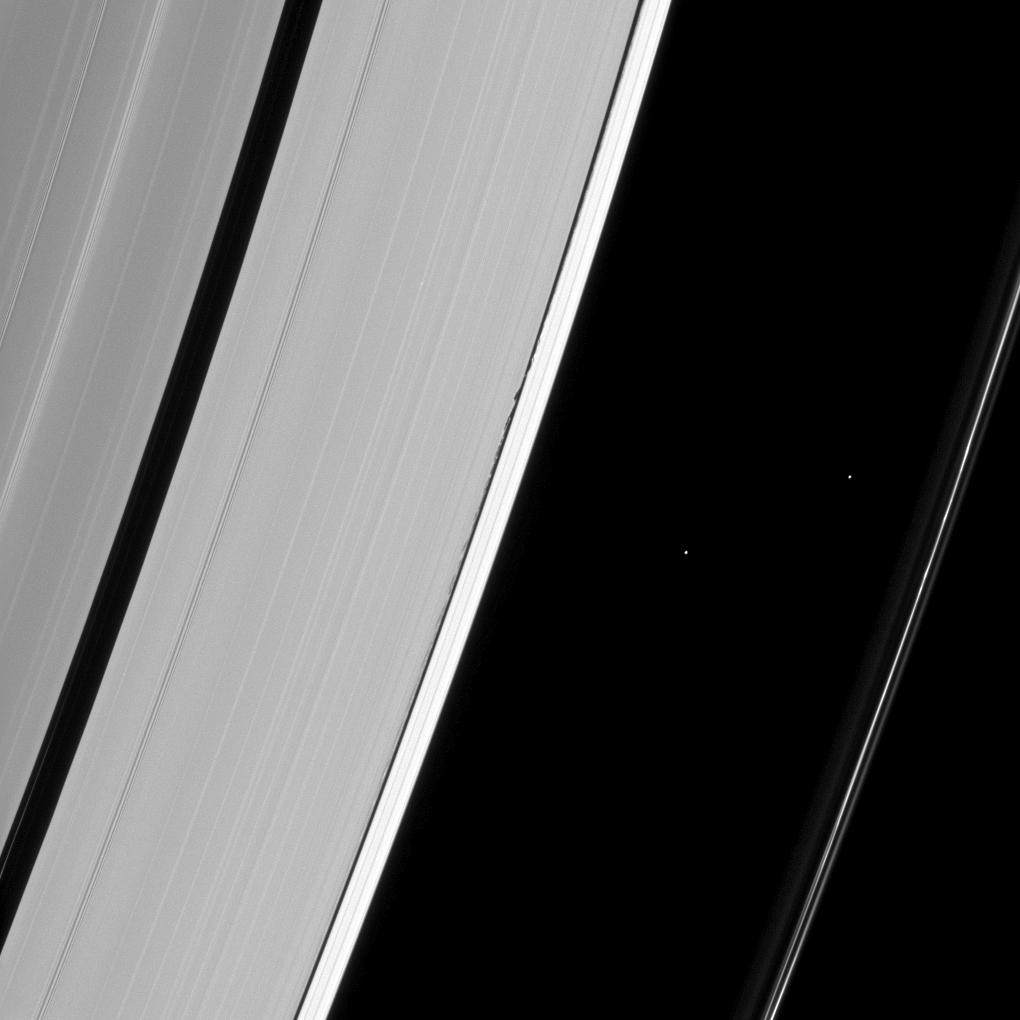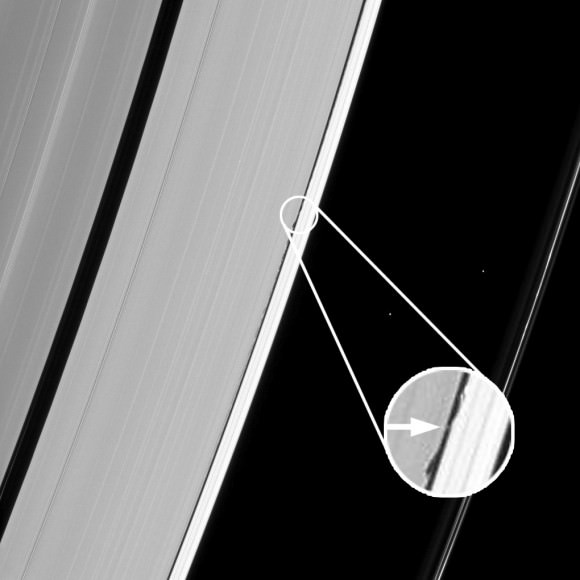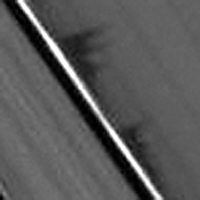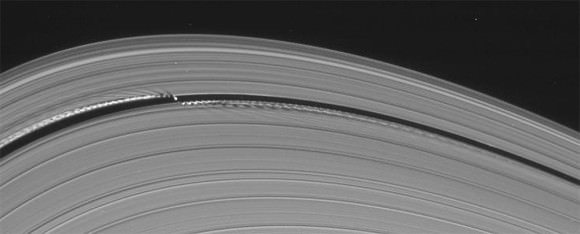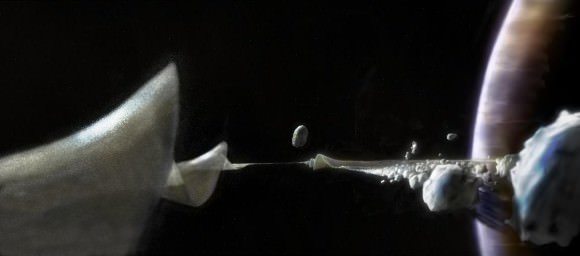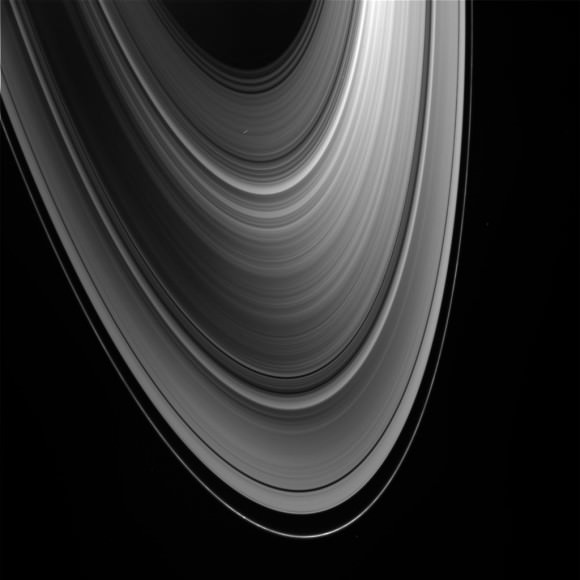Fans of astronomy are no doubt familiar with the work of Kevin Gill. In the past, he has brought us visualizations of what the Earth would look like if it had a system of rings, what a “Living Mars” would look like – i.e. if it was covered in oceans and lush vegetation – and an artistic rendition of the places we’ve been in our Solar System.
In his latest work, which once again merges the artistic and astronomical, Gill has created a series of images that show Saturn’s moon of Daphnis, and the effect it has on Saturn’s Keeler Gap. Through these images – titled “Daphnis in the Keeler Gap” and “Daphnis and Waves Along the Keeler Gap” – we get to see an artistic rendition of how one of Saturn’s moons interacts with its beautiful ring system.
As one of Saturn’s smallest moons – measuring just 8 km (~5 mi) in diameter – the existence of Daphnis had been previously inferred by astronomers based on the gravitational ripples that were observed on the outer edge of the Keeler Gap. This 42 km (26 mi) wide gap, which lies in Saturn’s A Ring and is approximately 250 km from the its outer edge, is kept clear by Daphnis’ orbit around the planet.
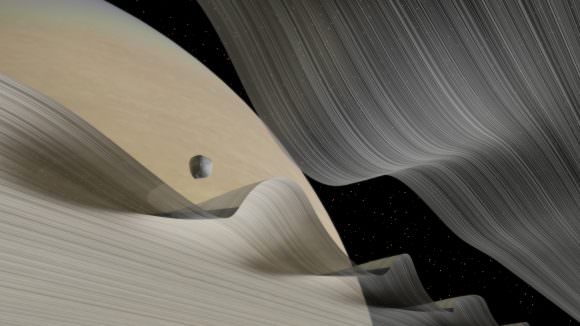
In 2005, the Cassini space probe finally confirmed the existence of this tiny moon. After analyzing images provided by the probe, the Cassini Imaging Science Team concluded that Daphnis’ path and orbit induce a wavy pattern in the edge of the gap. These waves reach a distance of 1.5 km (0.93 mi) above the ring, due to Daphnis being slightly inclined to the ring’s plane.
However, all the images taken by Cassini showed this effect from a great distance. In order to help people appreciate what it must look like close-up, Gill decided to create the visuals you see here. From his images, the passage of Daphnis is shown to give the A Ring a rippled, wavy appearance. In addition, one can see how Daphnis is inclined slightly above the plane of the A Ring, causing the waves to reach upward.
As Kevin Gill told Universe Today via email, these images were the largely inspired by the most recent images of Saturn’s rings that were provided by Cassini space probe, which returned to an equatorial orbit a few months ago after spending two years in high-inclination orbits:
“These are inspired by a general interest in the moon-ring interactions and some recent Cassini views of Daphnis on the 15th (shown below). This is one of the many aspects of the Saturn system that I imagine would be absolutely breathtaking if you could see it in person and ended up being rather simple to model in Maya.”
